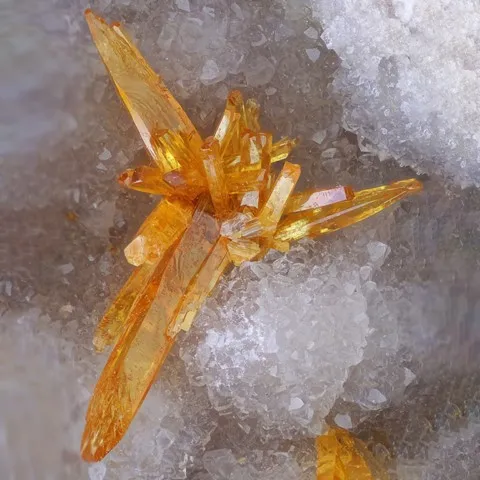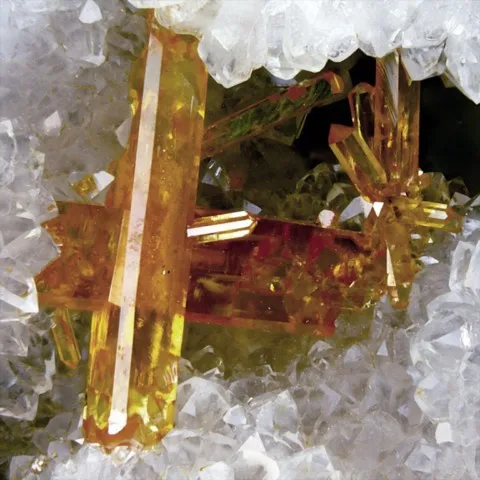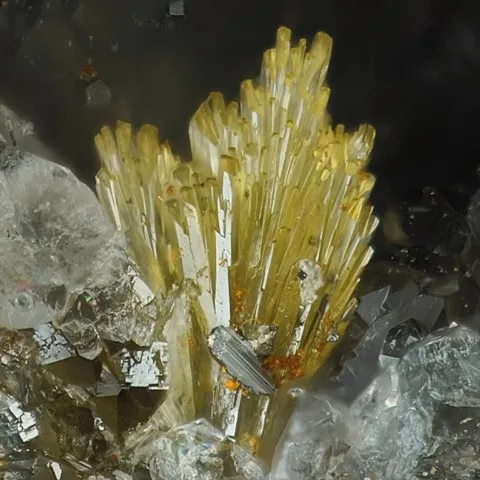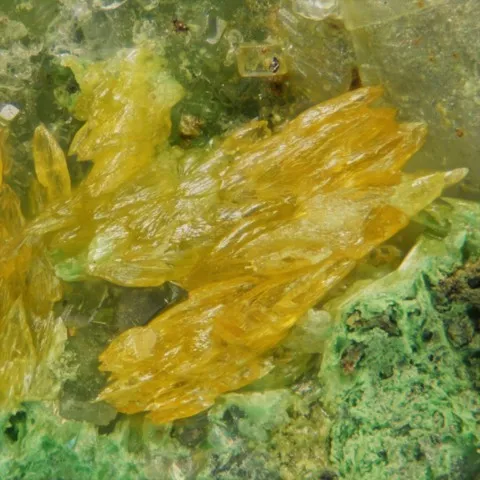TELLURITE
Class : Oxides and hydroxides
Subclass : Oxides
Crystal system : Orthorhombique
Chemistry : TeO2
Rarity : Very rare
Tellurite is a very rare tellurium mineral, dimorphic of paratellurite, found in the oxidation zone of epithermal gold deposits, where it comes from the oxidation of tellurium minerals. Tellurite is often closely associated with native tellurium, native gold, and various tellurides (hessite, sylvanite, altaite) and sulfides (sphalerite, galena, pyrite). The name of this mineral reflects its chemical composition. Tellurite forms small, flattened, striated, acicular crystals, frequently grouped into radiate spherulites or tufts, or powdery masses, white, yellow, sometimes orange in color.
Main photo : Tellurite from Moctezuma Mine, Sonora, Mexico © Joy Desor
Tellurite in the World
Twinning
No twinning known for this mineral species.
Fakes and treatments
No fakes listed for this mineral species.
Hardness : 2
Density : 5.88 to 5.92
Fracture : Undetermined
Streak : White
TP : Transparent
RI : 2.000 to 2.350
Birefringence : 0.350
Optical character : Biaxial -
Pleochroism : None
Fluorescence : None
Solubility : Nitric acid, hydrochloric acid, water
Magnetism : NoneRadioactivity : None





